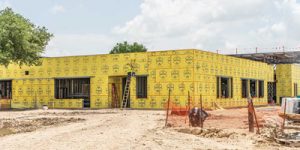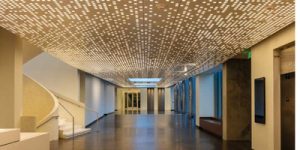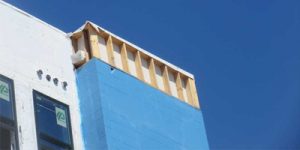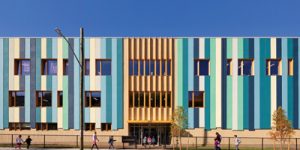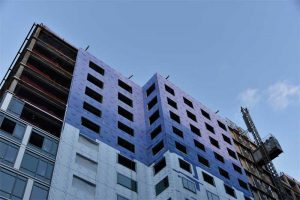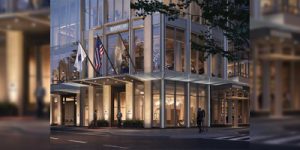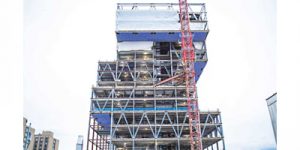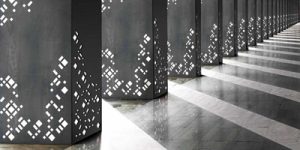Water intrusion causes significant problems for buildings and can go as far as damaging the structure. The building products industry is continuously looking for new technologies to assist with the prevention of water damage. Nature, as a notorious problem solver, often inspires solutions within the industry.
+ Read More
|
Air barriers create airtightness and help protect against energy loss, water infiltration, and other hazards impacting the durability and resiliency of a building and the comfort and health of its occupants. Climate conditions, temperature, location, and intended use of a building all are factors to consider for the specification...
+ Read More
|
Renovating and expanding an art museum designed by a well-known Italian architect comes with its share of design challenges. For the Denver Art Museum, an institution of visual art, it was a necessary revitalization effort to better serve the increase in foot traffic, which has now grown to more...
+ Read More
|
A primary design goal for any building enclosure should be to minimize the infiltration of bulk water into the intended dry zone of the various enclosure assemblies for the duration of their anticipated service life. Significant and/or recurring water infiltration can adversely affect moisture-sensitive materials and the overall performance...
+ Read More
|
How can designers, specifiers, and contractors capitalize on the growing trend of multiple aesthetic looks for a building’s exterior while ensuring the structural stability of a building enclosure? The connective tissue to solve this equation lies beneath what the eye can see. It is a singular, cohesive building envelope...
+ Read More
|
Using a fully adhered air barrier, whether sheet-applied or fluid-applied, is essential in creating a continuous barrier which will minimize air leakage. How well the membrane is bonded to the wall substrate will greatly affect the barrier’s performance. This adhesion is a critically important, yet often overlooked, factor in...
+ Read More
|
This case study explores the unique solutions employed for a unitized curtain wall facade at the Raffles Boston Back Bay Hotel & Residences, a new 35-story tower nearing completion in Boston’s urban core., and located on a prominent corner site with a complex set of environmental and contextual conditions.
+ Read More
|
While no building product component or system is truly “bulletproof,” industry resources are evolving to evaluate, select, and specify high-performance, aluminum-framed curtain wall, storefront, entrance, and window systems which can help protect against active shooter attacks in schools, universities, and other facilities.
+ Read More
|
With buildings accounting for nearly 40 percent of carbon dioxide (CO2) emissions, according to the Global Alliance for Buildings and Construction (GlobalABC), it is understandable why such an immense focus is being placed on them in the quest to achieve net-zero emission targets by 2050.
+ Read More
|
Equipping designers with column solutions that simultaneously meet design standards and building requirements enhance project outcomes. Metal column covers offer an innovative answer to both these standards, ranging from straightforward column covers intended for high-traffic environments, such as airports, to intricate design features in an architecturally significant space.
+ Read More
|
|
|




